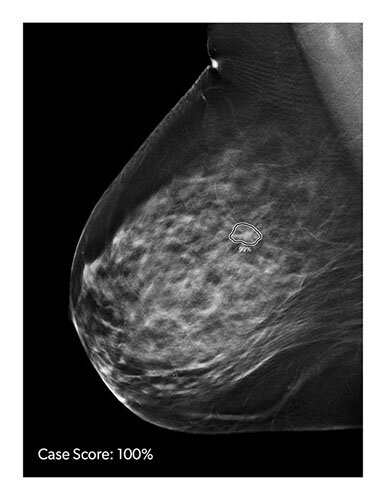Study Shows How to Reduce Unnecessary MRI Tests for Stroke Detection and Improve Safety
By MedImaging International staff writers
Posted on 07 Oct 2009
In a small "proof of principle” study, stroke researchers have found that a simple, one-minute eye movement exam performed at the bedside worked better than a magnetic resonance imaging (MRI) scan to differentiate new strokes from other less serious disorders in patients complaining of dizziness, nausea, and spinning sensations. Posted on 07 Oct 2009
Results of the study of 101 patients, who were already at higher than normal risk of stroke because of factors including high blood pressure or high cholesterol, were published online ahead of print on September 17, 2009, in the journal Stroke. The patients were all seen at OSF St. Francis Medical Center (Peoria, IL, USA).
The project, led by a Johns Hopkins University (JHU; Baltimore, MD, USA) neurologist in collaboration with colleagues at the University of Illinois in Peoria (USA; http://illinois.edu), found that the fast, extremely low-cost exam caught more strokes than the current gold standard of MRI, suggesting that if additional research on broader populations validates these findings, physicians may have a way to improve care and avoid the high costs of MRI in some cases. "The idea that a bedside exam could outperform a modern neuroimaging test such as MRI is something that most people had given up for dead, but we've shown it's possible,” said David E. Newman-Toker, M.D., Ph.D., assistant professor of neurology at the Johns Hopkins University School of Medicine.
Dizziness is a common medical problem, according to Dr. Newman-Toker, responsible for 2.6 million emergency room (ER) visits annually in the United States. While the vast majority of dizziness complaints are caused by benign inner-ear balance problems, about 4% are signals of stroke or transient ischemic attack (TIA, a condition that frequently warns of impending stroke in the coming days or weeks). Because more than half of patients with dizziness who are experiencing strokes show none of the classic stroke symptoms--one-sided weakness, numbness, or speech problems--emergency room physicians are estimated to misdiagnose at least one-third of them, losing the chance for quick and effective treatment.
"We know that time is brain, so when patients having a stroke are sent home erroneously, the consequences can be really serious, including death or permanent disability,” said Jorge C. Kattah, M.D., chairman of neurology at OSF St. Francis Medical Center, who co-led the study.
The study of eye movement tests was suggested by earlier research showing that people experiencing a stroke have eye-movement alterations that correlate with stroke-damage to various brain areas and that these are distinct from eye-movement alterations seen with benign ear diseases. Some patients, for example, cannot immediately adjust their eye position if their heads are quickly turned to the side, or they experience jerky eye movements as they try to focus on a doctor's finger when looking to either side.
Dr. Newman-Toker and his colleagues at the University of Illinois College of Medicine in Peoria speculated whether testing eye movements in dizzy patients might help them sort out which ones were having a stroke from those with other problems.
All of the patients in the current study were seen after complaining of severe dizziness that had lasted for several hours continuously, and all had at least one risk factor for stroke. The researchers chose them to increase the chance that they would find strokes in this population. None of the patients had a history of previous dizzy spells and more than half sought care at the Peoria medical center's ER, although some were inpatients at the hospital or were transferred from other area hospitals.
The researchers gave each patient an exam comprised of three eye-movement tests: looking for inability to keep the eyes stable as patients heads were rotated rapidly to either side, looking for jerkiness as patients tracked a doctor's finger to look right and left, and checking eye position to see if one eye was higher than the other. Each patient then received an early MRI scan, the highest-quality neuroimaging test available to confirm stroke in dizzy patients. Patients with eye tests suggesting stroke but without stroke on the first MRI scan underwent a repeat scan.
In the end, 69 patients were diagnosed with stroke and 25 with inner-ear conditions. The remainder had other neurologic problems. Using only the three eye-movement tests, the researchers had correctly diagnosed all of the strokes and 24 of 25 with inner-ear conditions. By contrast, initial MRI scans were falsely negative in 8 of the 69 stroke patients, who were later correctly diagnosed with follow-up MRI scanning.
Although the researchers emphasize the need to verify their results in a larger and more general population of patients with dizziness, Dr. Newman-Toker noted that the initial findings are "incredibly promising.” If they hold true, he added, testing eye movements could have several advantages over MRI beyond effective diagnostics. For example, while the wait time for an MRI can be several hours or more, physicians can perform all three eye-movement tests in a minute or less. Moreover, the eye-movement tests are "basically free,” compared to US$1,000 or more for an MRI scan, Dr. Newman-Toker stated.
"In an era where cost containment is butting up against issues of quality in health care delivery, there's tremendous potential for bedside approaches like ours that could reduce costs while improving quality at the same time,” concluded Dr. Newman-Toker.
Related Links:
Johns Hopkins University
University of Illinois in Peoria
OSF St. Francis Medical Center














